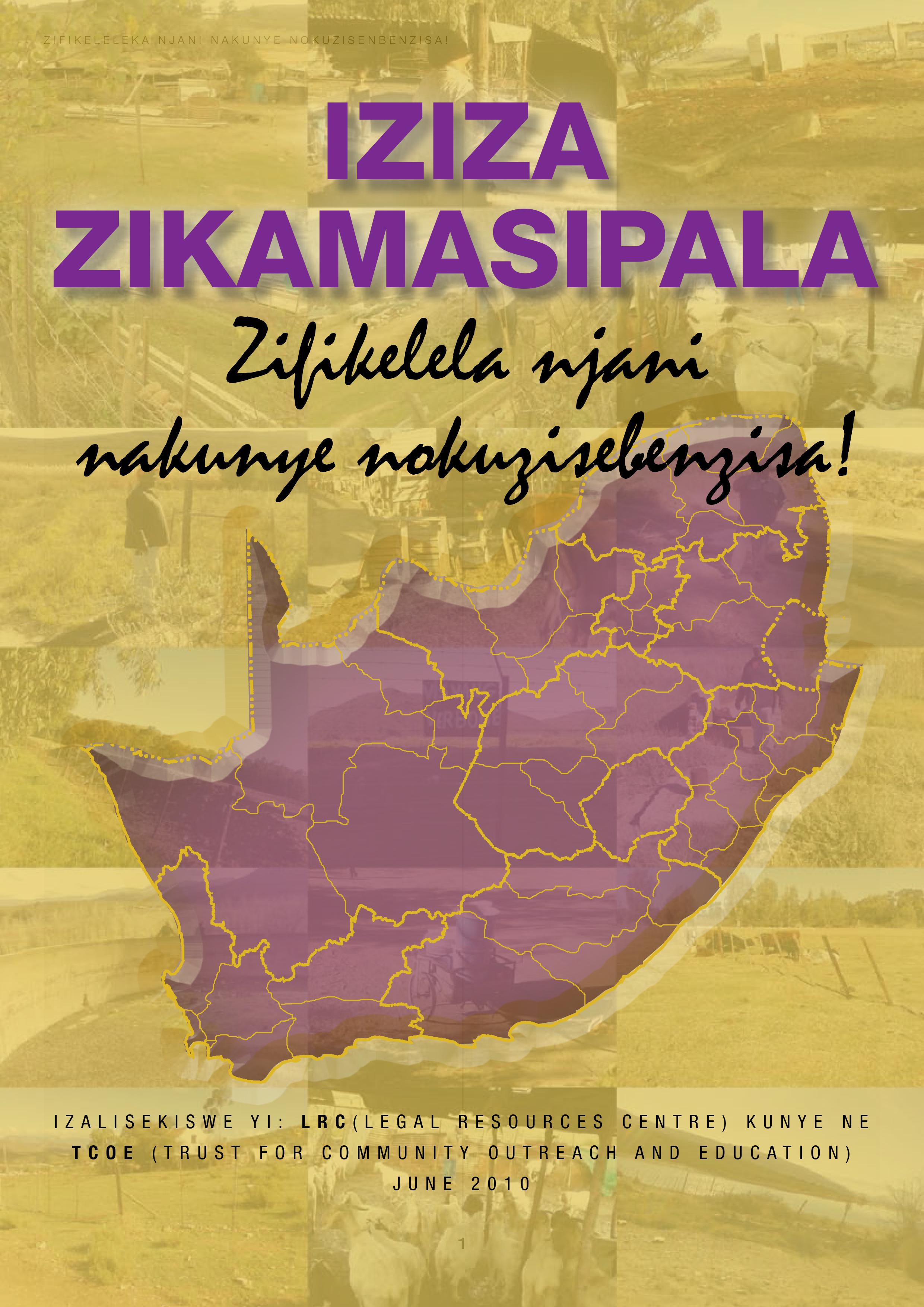Resource information
[XHOSA} Umhlaba wesisa kamasipala lusiphathela ithuba elilodwa lophuhliso lwamaphandle nohlaziyo kwezemihlaba nezolimo. Umthetho usixelela ukuba umhlaba wesisa kamasipala kufuneka ube negalelo kuhlaziyo kwezemihlaba apho uthi wenziwe ufumaneke ukuze usetyenziselwe ulimo ngabo babesakuya bengavumelekanga kwixa langaphambili ukuba
bafumane imihlaba yeziza zikamasipala. Abahlali basezidolophini abahluphekileyo nabanqwenela
ukuzibandakanya kwiinkuthalo zolimo kufuneka ngoko bacebe ukwenza amabango okufumana umhlaba wesisa kamasipala.
[ENG]
Municipal commonage, used as a common resource for communities, poses a unique opportunity for rural development and land and agrarian reform. The law says that municipal commonage must be used to contribute towards land reform. It must be made available for agricultural purposes to those who were previously excluded from accessing commonages.
Poor town residents who want to engage in agricultural activities must therefore organise to demand access to municipal commonage. This booklet will help you to understand the law, access commonage and use commonage.
This booklet was developed by the Legal Resources Centre and Trust for Community Outreach and Education


